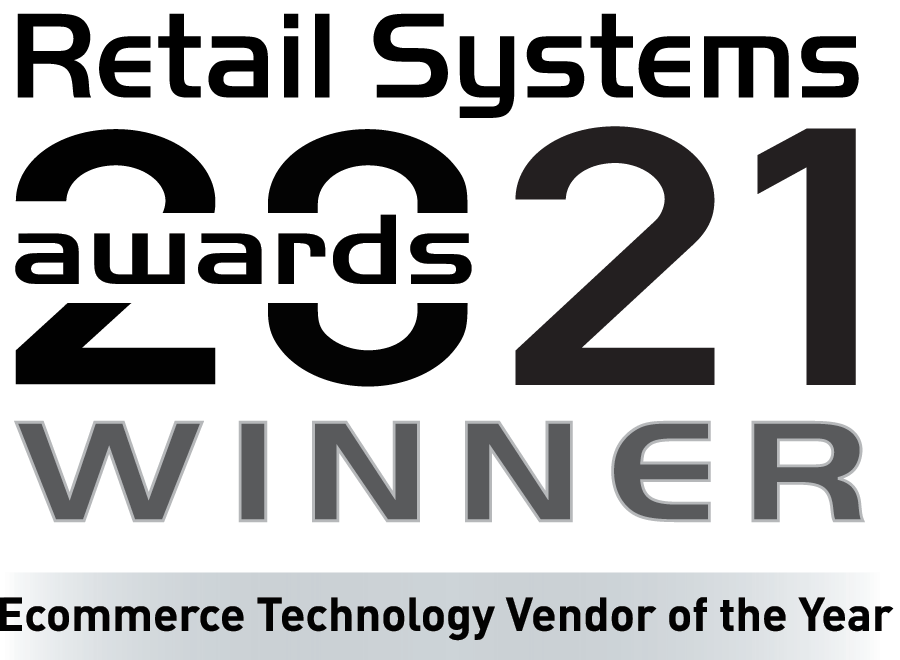Connected commerce is the latest phrase to take over the retail industry and it isn’t hard to see why. Thanks to the pandemic, e-commerce has grown extremely quickly with new shopping sites popping up from […]
Connected commerce is the latest phrase to take over the retail industry and it isn’t hard to see why. Thanks to the pandemic, e-commerce has grown extremely quickly with new shopping sites popping up from nowhere and new digital marketing channels and marketplaces appearing just as fast. It isn’t enough to have your own website any longer. You need to be everywhere that your customers are and delivering a shopping experience that is second to none. Let’s dive into it.
In this blog, we’ll be talking about connected commerce and the future of retail by looking at some key topics. We’ll cover:
- What is connected commerce?
- Why you need to sell on marketplaces (and everywhere else)
- The rise of social commerce
- What is a marketplace?
- How retailers are offering marketplace capability
- Top 4 global marketplaces
- Marketplaces around the world
- The future of retail and connected commerce
What is connected commerce?
Connected commerce is the seamless integration of online and in-store shopping experiences that allows a customer to shop on their own terms. This can include everything from discovering a product, trying it before they buy, the purchase experience and receiving the goods. Connected commerce ensures that everything is personalised, on the customer’s own terms and delivered to their satisfaction.
From the seller’s side, that means that connected commerce must be thought of in reverse - how to get from a single product or SKU on your product data feed to offering it to the world on as many marketplaces and via as many digital channels as possible. Done well, brands and retailers can ensure that the right person sees the product and becomes a customer. It sounds easy but when companies have thousands of products, it is hard to do it well for every one of them!
Why you need to sell on marketplaces (and everywhere else)
If connected commerce means offering a personalised shopping experience and ensuring that everything is delivered on a customer’s own terms, then brands must make sure that they are everywhere that their target customer is searching. Setting up and publicising your own online shop is just the start.
Think of how you shop personally – do you click on ads on a search engine results page (SERP) like Google? Do you use social media for inspiration? Do you pop into a physical shop to try before you buy? Does your search begin on a marketplace like Amazon or eBay or a high-street retailer’s marketplace like Next? There are so many possible touchpoints for you to consider when you shop for a product.
The simple fact is that if your customers search in all these ways, and they do, then you need to be there to meet them when they are ready to buy. Connected commerce is all about offering that next gen experience for everyone. Since nobody knows when a purchase is being considered, it pays for brands to be in as many places as possible. This increases the chances of a sale.
Alongside this, brands and retailers also need to think about the way that their product is described on their data feed. Is every attribute filled in? Is the product type correct? Are the images clear and do they show the most important parts of the product? Does the title match up with what someone might type into the search engine?
The rise of social commerce
Social commerce refers to purchasing a product directly via a social media platform rather than through a traditional ecommerce website. The reason for this is that it decreases obstructions to a sale, while also allowing customers to interact with brands and browse. Social commerce is not to be confused with social media marketing, which often falls under the same umbrella.
Traditionally, mobile users have a cart abandonment rate of 86%,which is troubling when the majority of website browsing takes place on a phone. Ecommerce websites can often struggle with their mobile layout too, which only reinforces the possibility of losing out on a sale. By integrating everything with the social media platform itself, social commerce becomes an important player in improving checkout conversions.
Rather than directing customers to an online store, social commerce brings the store to the customer. Considering social media is built to be consumed on a mobile, social commerce succeeds in the same way. Creating a frictionless shopping experience should enhance customer loyalty, while also resulting in increased sales over time.
Examples of social commerce platforms include Facebook, Pinterest, Instagram, TikTok and Snapchat, which all offer varying forms of social commerce experiences.
Learn more on the rise of social commerce in online retail.
Learn more about selling on Pinterest and selling on TikTok.

What is a marketplace?
Marketplaces are best thought of as an online version of a local market. There are lots of sellers operating under one banner and paying a fee or commission to the provider of their stall space. Online marketplaces are the same and help to ensure that customers can find whatever they are looking for more quickly. They also offer more choice and the availability of an item at the best possible price.
Until recently, marketplaces were only really thought about in terms of Amazon and eBay, two giants of the online landscape. When it came to more unique gifts, Not on the High Street and Etsy were the main players. But as with everything in ecommerce, marketplaces are changing the way that people shop. Many specialised marketplaces are appearing while retailers are moving into the field.
How retailers are offering marketplace capability
Marketplaces have long been popular in Australia and New Zealand with eBay proving more popular than Amazon in the APAC region. They also have marketplaces including TheMarket, Catch.com, MyDeal and TradeMe to name just a few. With the advent of Mirakl and Marketplacer, two companies that provide the backend software for any retail business to have a marketplace platform, the industry is changing.
As such, UK marketplaces are expecting to grow exponentially in the next few years. Halfords, Harvey Nicholls, Debenhams and Decathlon are all examples of large chains that have an online marketplace selling their own goods as well as those from selected third-party providers. More marketplaces mean more chances of a sale for brands, but only if they are where their customers are shopping.
Top 4 global marketplaces
A lot of people are shopping via online marketplaces. As such, it pays to know which marketplaces brands should target.
When it comes to marketplaces, there are some that are extremely country specific. Although huge, they can’t feature on a list of worldwide marketplaces because they simply don’t offer a global service. In fact, only 4 of the top 10 marketplaces delivers globally. As a result, we have had to exclude the likes of Mercado Libre, Rakuten, Shopee and Walmart from this list.
Here are the top 4 global marketplaces:
Amazon (Worldwide | All Product Categories)
Amazon is the 12th most visited website in the world, and the most visited marketplace globally. The leading e-commerce platform in many of the countries in which it operates, Amazon receives a massive 5.2 billion visits per month. To put that into context, there are 7.95 billion people in the world!
Selling on the most-well known marketplace brings obvious advantages for brands such as more access to buyers. As well as this, consumers tend to trust Amazon sellers thanks to their strong brand.
Thanks to its global reach, selling on Amazon is a must as it covers all major product categories from fashion and homeware through to electronics and toys. Almost anything can be sold on Amazon and thankfully, it isn’t difficult to get set up. You can even choose for Fulfilment by Amazon if it appeals.
Selling on Amazon might seem daunting but it doesn’t have to be. We’ve written a frequently asked questions page to get you started.
eBay (Worldwide | All Product Categories)
eBay is the 2nd most visited global marketplace but is 3x smaller that Amazon in terms of its reach. Even so, with 1.7 billion global visits each month, eBay is another excellent marketplace platform for sellers to use.
With the same benefits of selling on Amazon such as integrating with a trusted brand and access to millions of potential customers, selling on eBay also offers other advantages. Fees for sellers are lower for the most part, while products can be sold via auction or with customers choosing to ‘buy it now’.
As well as this, eBay regularly runs promotions to incentivise buyers, including promotions via the popular Nectar card loyalty programme in the UK .
Setting up to sell on eBay is easy. New sellers can work with price setting recommendations, pre-set templates and promotional tools, while there are comprehensive guides if needed.
AliExpress (Worldwide | All Product Categories)
Although smaller than Mercado Libre and Rakuten, AliExpress offers a global service. AliExpress is the 5th biggest marketplace worldwide with over 530 million visits every month.
The e-commerce retail platform of Alibaba, one of the largest companies in China, the platform has been localised into 18 different languages, accepts local currency in 51 countries and gives brands access to more than 150 million people.
Slightly different in scope to the likes of Amazon, AliExpress bills itself as the leading platform of cross-border commerce for SMEs, allowing them to set up their own personalised store after registration.
Getting setup is relatively straightforward; brands need only click the link below and allow themselves to be taken through the steps.
Etsy (Worldwide | Handmade, Vintage & Craft)
Etsy was the second most searched for global marketplace in 2021, suggesting that the platform is growing in popularity.
As such, selling on Etsy makes sense if you want access to a global customer base. With over 96 million active Etsy buyers worldwide, and over 7.5 million sellers, it is a competitive but effective marketplace for finding niche and often homemade goods.
Selling on Etsy offers an opportunity for smaller businesses to grow. They provide easy-to-use tools to help you manage and promote your personal marketplace, and they are fully transparent with their fees.
It is easy to open your shop and begin to sell on Etsy. Simply click ‘Open your Etsy shop’ at the link below and follow the prompts.
Marketplaces around the world
As previously mentioned above, marketplaces are growing around the world and a marketplace doesn’t have to be global to have an impact on your business.
If selling in China, you might wish to look at selling on Taobao. If based in Turkey, selling on Trendyol would make sense, while the Allegro marketplace is perfect if your business is based in Poland.
We have written an extensive article on selling on marketplaces in Australia and New Zealand, and hope to cover many other markets soon.
The future of retail and connected commerce
It’s clear that connected commerce is here to stay. Customers enjoy shopping of all kinds online and offline, so it pays to meet them at the point of purchase.
It is difficult to know what the future of connected commerce might look like as the only constant in commerce is change. Social commerce is certainly growing while Meta’s investment in the metaverse suggests that it won’t be long before shopping and product advertising in VR becomes commonplace. McDonald’s is opening a virtual restaurant – with orders delivered to your door – while H&M is working on a virtual showroom. Alongside this, Google is working on Project Magi.
That’s not to say everything will be conducted online. Research by Shopify suggests more brands will move into physical retail as a way of meeting their customers face to face. They will offer appointments and experiences, and use staff as brand ambassadors.
Ultimately, the one thing that a brand or retailer needs to consider is where their customers are. Meet them in that location when they are ready to make a purchase!
Easily meet your customers everywhere
Provide a seamless shopping experience both offline and online
Download free resourceTags










 River Island
River Island